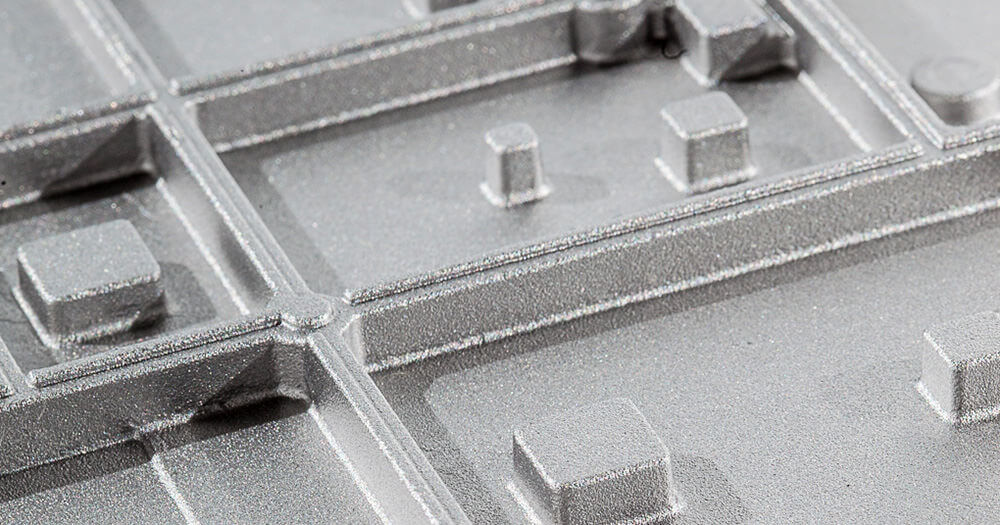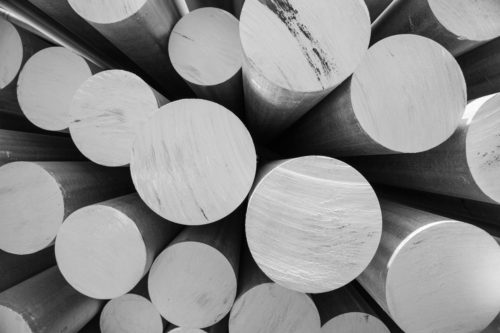The smart Trick of Stahl Specialty Company That Nobody is Talking About
The smart Trick of Stahl Specialty Company That Nobody is Talking About
Blog Article
The 9-Minute Rule for Stahl Specialty Company
Table of ContentsMore About Stahl Specialty CompanyThe smart Trick of Stahl Specialty Company That Nobody is Talking AboutThe 10-Second Trick For Stahl Specialty CompanyStahl Specialty Company - The FactsSome Known Incorrect Statements About Stahl Specialty Company 9 Simple Techniques For Stahl Specialty Company

If you're developing a steel item, you've likely considered making use of light weight aluminum as the base product. It has a high strength-to-weight ratio, excellent deterioration resistance, excellent formability, and aesthetic allure. These elements have led to its increased popularity in recent times. Pure light weight aluminum has actually limited applications, so it is usually incorporated with various other aspects, such as silicon, magnesium, and manganese to create alloys.
Various aspects and quantities create a wide range of preferable physical and chemical properties. And the Light weight aluminum Organization (AA), based in The United States and copyright, has produced specifications that control light weight aluminum alloys' make-up, buildings, and language. There are two kinds of aluminum alloys functioned and cast. Factory employees create these alloy enters different ways, which dramatically affects their characteristics.
The Buzz on Stahl Specialty Company
Cast light weight aluminum alloys are made by thawing pure aluminum and combining it with various other steels while in liquid form. After that the mix is put right into a sand, die, or investment mold and mildew. After solidification, the steel is eliminated from its mold. At this stage, it remains in either its final form or as a billet or ingot for further handling.

160.0 stands for a cast with a minimum of 99.60% aluminum. The 4th figure, which comes after the decimal point, defines if the alloy is a casting (xxx. 0) or an ingot (xxx. 1). Wrought aluminum alloys likewise begin by integrating liquified light weight aluminum with other metals. In comparison to cast alloys, nonetheless, they are formed right into their final shape with procedures such as extrusion, rolling, and flexing after the metal has solidified right into billets or ingots.
There are lots of small distinctions in between functioned and cast aluminum alloys, such as that cast alloys can include extra substantial amounts of various other steels than wrought alloys. However the most notable distinction between these alloys is the manufacture procedure where they will certainly most likely to supply the last item. Other than some surface area treatments, cast alloys will certainly leave their mold and mildew in virtually the specific solid type desired, whereas wrought alloys will certainly go through a number of adjustments while in their solid state.
If you think that a functioned alloy might be the ideal for your job, take an appearance at several of our write-ups that clarify even more regarding certain functioned alloys, such as Alloy 6061 and Alloy 6063. On the other hand, if you assume a cast alloy would certainly be much better for you, you can discover more regarding some actors alloys in our Alloy 380 and Alloy 383 articles (coming soon).
Some Of Stahl Specialty Company
When choosing an aluminum shop for your production requirements, it's crucial to examine several variables. One of one of the most critical aspects to take into consideration is the experience and capability of the shop. Aluminum Casting. Picking a foundry who has the appropriate knowledge of the light weight aluminum spreading procedure, and the portfolio to show for it, aids to have an effective outcome for your job
Having the experience and sector expertise to engineer your castings for optimum manufacturing and quality results will certainly simplify the project. Producing aluminum spreading calls for a facility set of processes to achieve the ideal outcomes. When making a decision on a brand-new aluminum factory to companion with, ensure they have extensive market experience and are knowledgeable concerning all elements of the aluminum casting process: design, manufacturing, material analysis, and item screening.
The foundry ought to also have a proven track record of delivering remarkable products that meet or exceed client expectations. Quality assurance needs to additionally be at the top of your list when selecting an aluminum shop. By collaborating with a qualified shop that complies with the requirements for quality assurance, you can safeguard the honesty of your item and guarantee it meets your specifications.
By choosing a company that uses solutions that satisfy or exceed your item requirements, you can be sure that your project will certainly be finished with the utmost precision and efficiency. Various parts call for different production methods to cast aluminum, such as sand spreading or pass away casting.
The Main Principles Of Stahl Specialty Company
Die casting is the important site name offered to the process of producing complex metal parts with usage of mold and mildews of the component, additionally known as passes away. It generates even more parts than any various other process, with a high degree of accuracy and repeatability. There are 3 sub-processes that fall under the category of die casting: gravity die spreading (or irreversible mold and mildew spreading), low-pressure die spreading and high-pressure die casting.
After the pureness of the alloy is evaluated, passes away are produced. To prepare the passes away for casting, it is crucial that the dies are tidy, so that no residue from previous productions continue to be.
The Ultimate Guide To Stahl Specialty Company
The pure steel, likewise recognized as ingot, is added to the furnace and maintained the molten temperature of the steel, which is then moved to the injection chamber and injected right into the die. The stress is then kept as the metal solidifies. When the metal strengthens, the cooling procedure begins.
(https://www.bitchute.com/channel/CXjDol1cuosT)
The thicker the wall of the part, the longer the cooling time due to the quantity of indoor steel that additionally requires to cool down. After the part is fully cooled, the die cuts in half open and an ejection system pushes the element out. Following the ejection, the die is closed for the following shot cycle.
The flash is the extra material that is cast throughout the procedure. Deburring gets rid of the smaller sized items, called burrs, after the cutting procedure.
The Ultimate Guide To Stahl Specialty Company

Zinc is one of the most previously owned alloys for die casting due to its lower expense of raw products. It's also among the stronger and steady metals. And also, it has superb electric and thermal conductivity. Its rust resistance also allows the components to be durable, and it is just one of the much more castable alloys as a result of its reduced melting point - Aluminum Castings.
As pointed out, this alloy is just one of the most commonly made use of, yet manufactures will, at times, select aluminum over zinc as a result of light weight aluminum's manufacturing benefits. Light weight aluminum is extremely economical and among the much more versatile alloys. Light weight aluminum is used for a variety of different items and markets anything from home window frameworks to aerospace materials.
Report this page